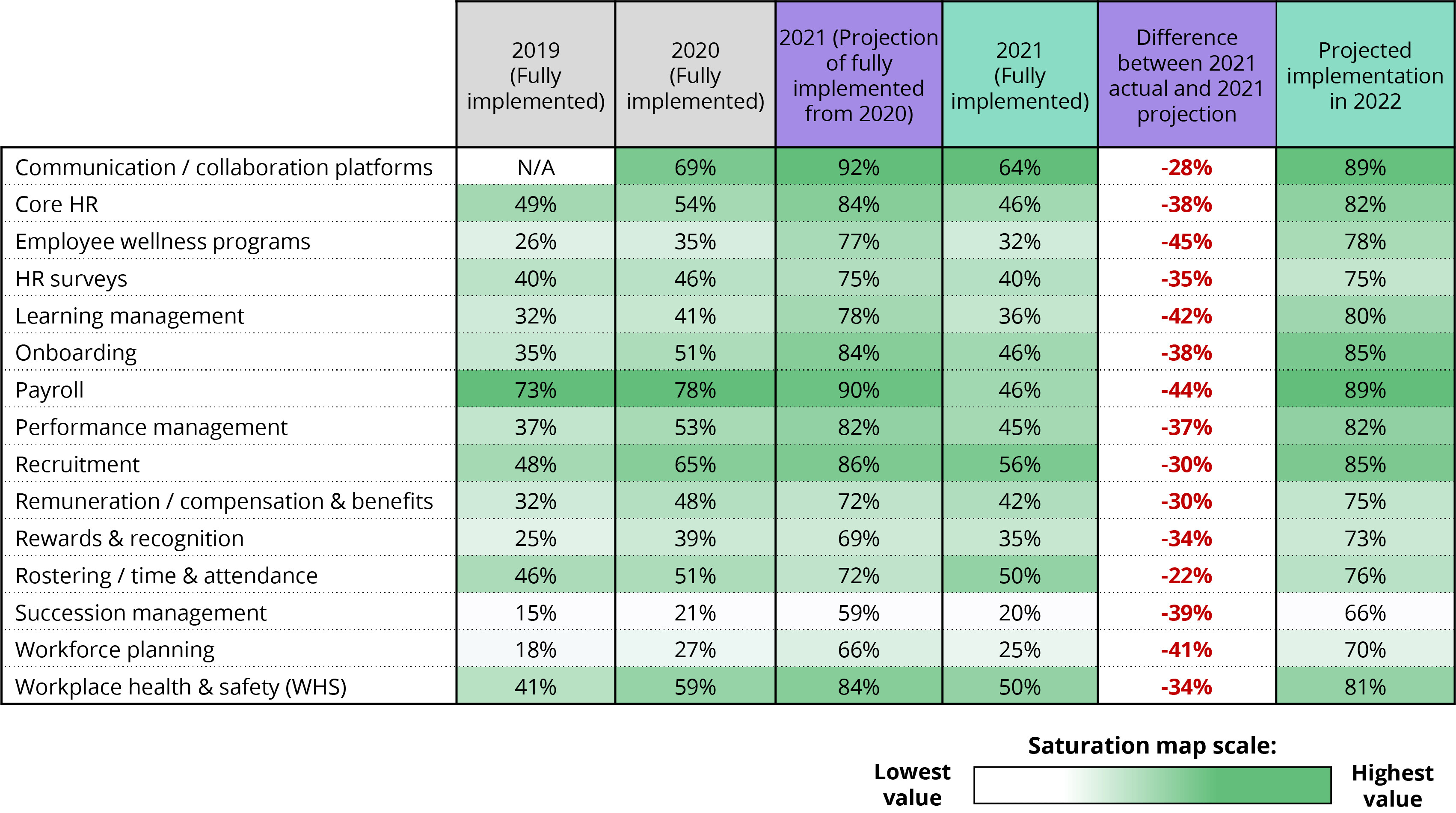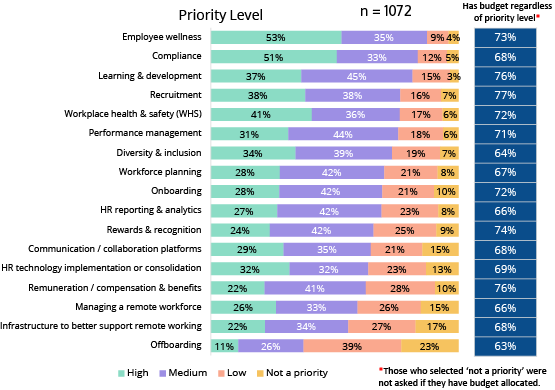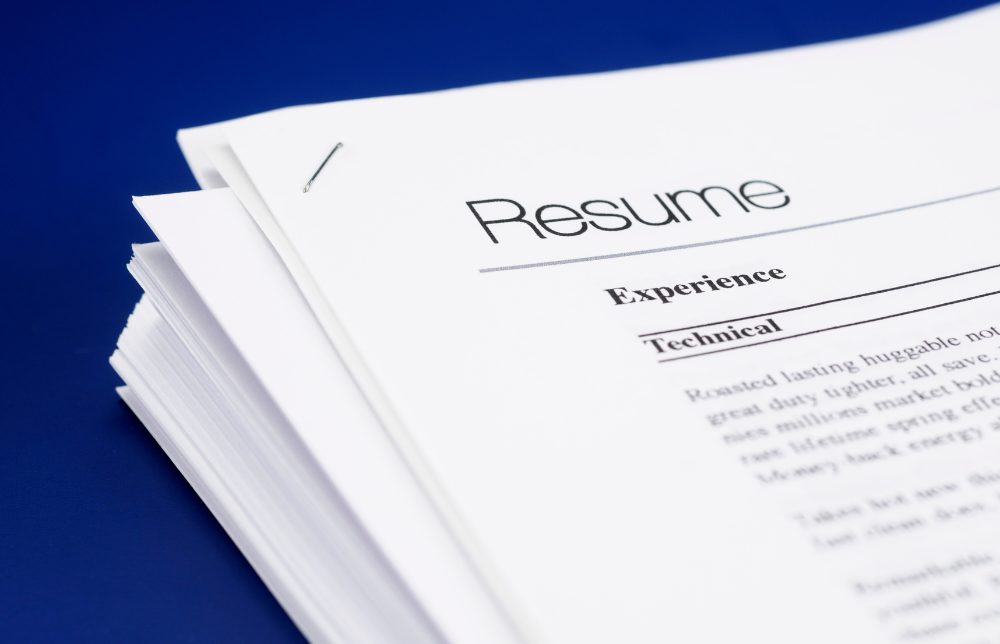HR Technology Trends: What You Need to Know
If the COVID-19 pandemic taught business leaders anything, it’s that technology is vital to business continuity. Technology has been critical for HR professionals to be able to work remotely and ...

If the COVID-19 pandemic taught business leaders anything, it’s that technology is vital to business continuity. Technology has been critical for HR professionals to be able to work remotely and it has also ensured that even though the world had turned upside down, the fundamentals of HR – such as payroll, performance management, employee engagement and communication, and learning & development – have continued.
What type of HR technology was implemented in 2021 and what is planned for 2022?
For the third year running, in September 2021 ELMO Software partnered with the Australian Human Resources Institute (AHRI) to survey HR and payroll professionals in Australia and New Zealand. The resulting 2022 HR Industry Benchmark Report draws on the responses from more than 1500 HR and payroll professionals and covers all facets of HR – from challenges and priorities through to HR’s skills and the profession’s use of technology.
Respondents were asked about the current state of HR and payroll technology in their organisation. The results are below.
Compared with the 2020 results, in terms of being either ‘fully implemented’ or ‘currently being implemented’, the top 3 remain unchanged: communication / collaboration platforms; payroll; and recruitment.
Based on the category of ‘currently being implemented’, employee wellness was the most popular, cited by 32% of respondents. Learning management and workforce planning (both 29%) are the second most popular, mirroring where the challenges and priorities for 2022 lie as organisations look for ways to retain talent. Interestingly, despite sitting at the bottom of the table in terms of being ‘fully implemented’ or ‘currently being implemented’, succession management takes the top spot in the category of ‘less than 12 months away’, indicating that perhaps mapping future careers to future roles is also gaining traction as a retention driver.
Projected tech implementations vs. actual implementations
Of course, talking about implementing technology and following through with it are two separate issues. Respondents were also asked about their projected and actual tech implementations in 2021.
Data from the 2020 survey that projected the level of technology implementation levels in 2021 proved to be overly optimistic. In reality, the actual levels of fully implemented technology in 2021 were significantly lower than the 2020 projection (best seen in the column titled ‘difference between 2021 actual and 2021 projection’ in the graph below). This disconnect was no doubt due to ongoing operational issues and challenges presented by COVID-19. However, there was still a steady rise in the implementation of HR technology.
Looking ahead, the 2022 projected implementations are strongest for communication / collaboration platforms, core HR, employee wellness and HR surveys.
Aligning budgets to HR priorities
Despite the value of organisational agility being well and truly demonstrated throughout 2020/21, it can still be a struggle to ensure budgets are allocated to meet constantly shifting priorities and organisational challenges. It’s clear there is some disconnect between the percentage of respondents who indicated each HR area as a high or medium priority and the percentage of respondents who have the budget to align with this. See full results in the graph below.
Among the biggest disconnects were that:
- 88% of respondents said employee wellness was a high or medium priority, yet only 73% had budget allocated towards this
- 84% of respondents said compliance was a high or medium priority, yet only 68% had budget allocated towards this
- 82% of respondents said learning & development was a high or medium priority, yet only 76% had budget allocated towards this
Conversely, we see that:
- 76% of respondents have budget allocated to remuneration / compensation & benefits, yet only 63% said this was a high or medium priority
- 68% of respondents have budget allocated to infrastructure to better support remote working, yet only 56% said this was a high or medium priority
- 63% of respondents have budget allocated to offboarding, yet only 37% said this was a high or medium priority
4 questions to ask as part of a HR technology audit
Undertaking an audit of existing technology can help HR leaders identify where technology could be either implemented or more effectively utilised.
As part of this audit, consider current strengths and gaps in existing HR-related technology. Experienced HR observer Dave Ulrich[1] suggests asking four questions as part of an overall HR technology audit:
- To what extent do we use technology to streamline administrative HR work?
- To what extent do we use technology to innovate our HR practices?
- To what extent do we use technology to access information?
- To what extent do we use technology to create social experiences and connections?
The above insights are just a small sample of what’s available in the 2022 HR Industry Benchmark Report. To download your copy of the report, please click here.
ELMO Software is a cloud-based solution that helps thousands of organisations across Australia, New Zealand and the United Kingdom to effectively manage their people, process and pay. ELMO solutions span the entire employee lifecycle from ‘hire to retire’. They can be used together or stand-alone, and are configurable according to an organisation’s unique processes and workflows. Automate and streamline your operations to reduce costs, increase efficiency and bolster productivity. For further information, contact us.
[1] “Do an HR technology audit to get the most out of digital HR”, LinkedIn article by Dave Ulrich, January 2017
 HR Core
HR Core 












